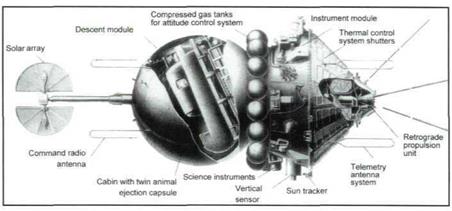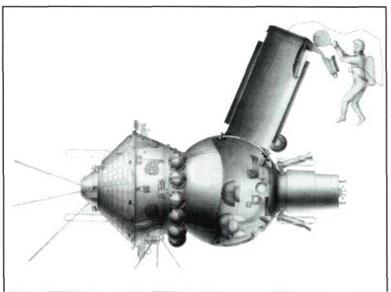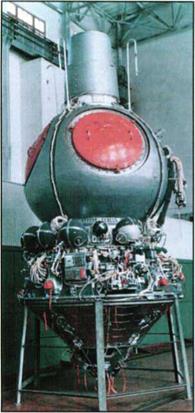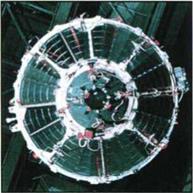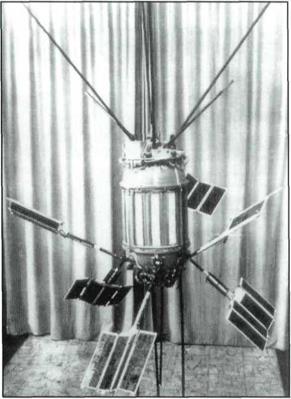Onset of Manned Flight
|
|
|
|
|
|
|
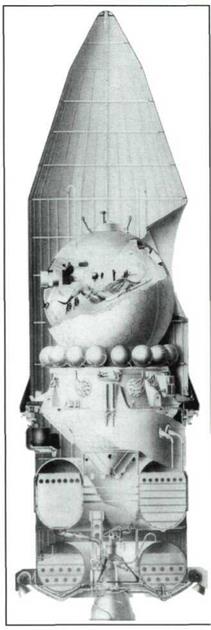

![]()
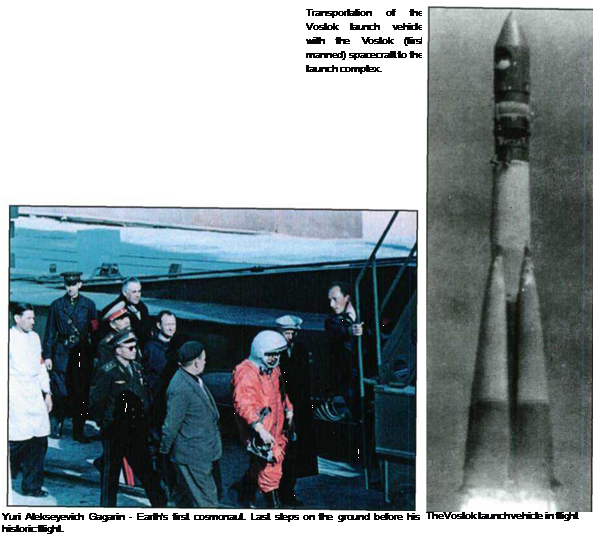 |
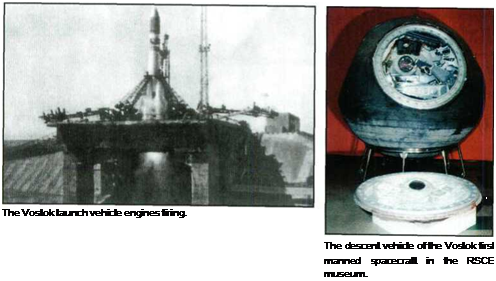 |
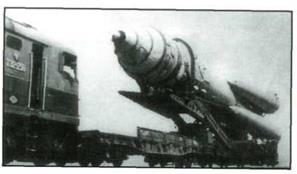
|
|
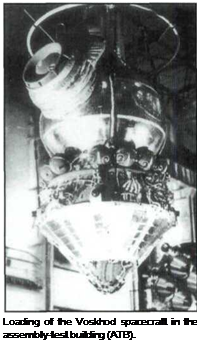 The Voskhod multi-man spacecraft made it possible to put a crew of three people into space, and as well provided a special airlock through which a man could egress into space.
The Voskhod multi-man spacecraft made it possible to put a crew of three people into space, and as well provided a special airlock through which a man could egress into space.
|
|
|
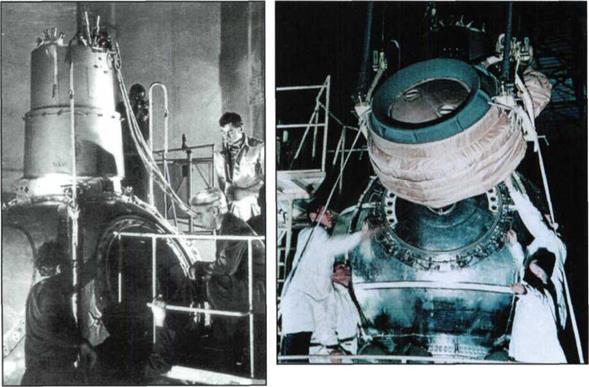
|
|
|
The Voskhod spacecraft on its support. |

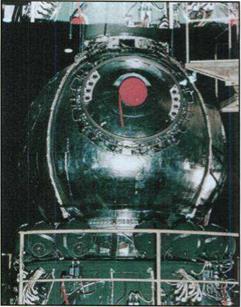

![]()
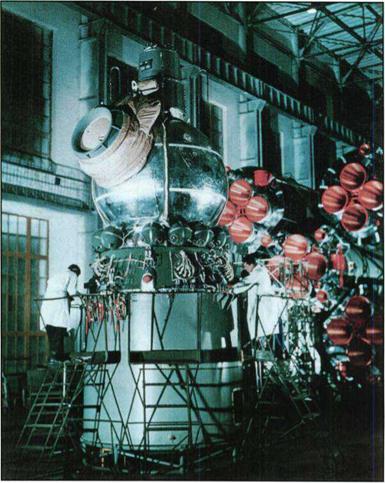
|
|
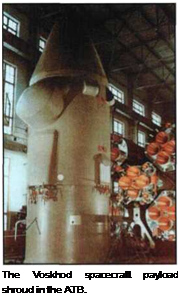
![]()
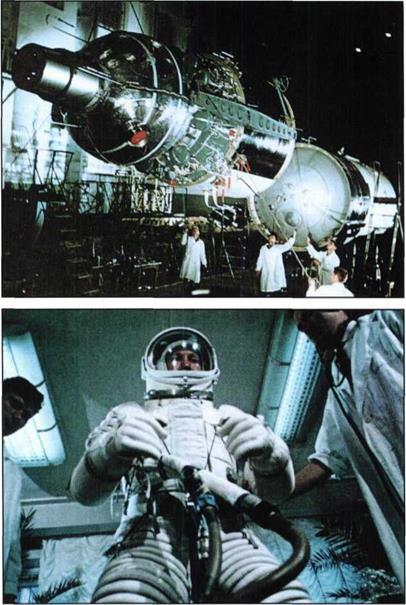 Cosmonaut A. A. Leonov before flight. He was the first to egress into space and stayed there for 12 minutes and 9 seconds. He moved away from the spacecraft a distance of 5 meters.
Cosmonaut A. A. Leonov before flight. He was the first to egress into space and stayed there for 12 minutes and 9 seconds. He moved away from the spacecraft a distance of 5 meters.
|
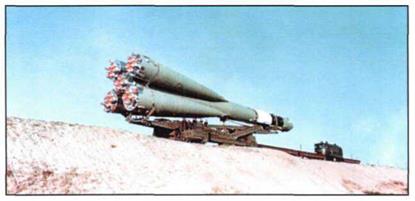
Fueling of the launch vehicle for the Voskhod spacecraft.
|
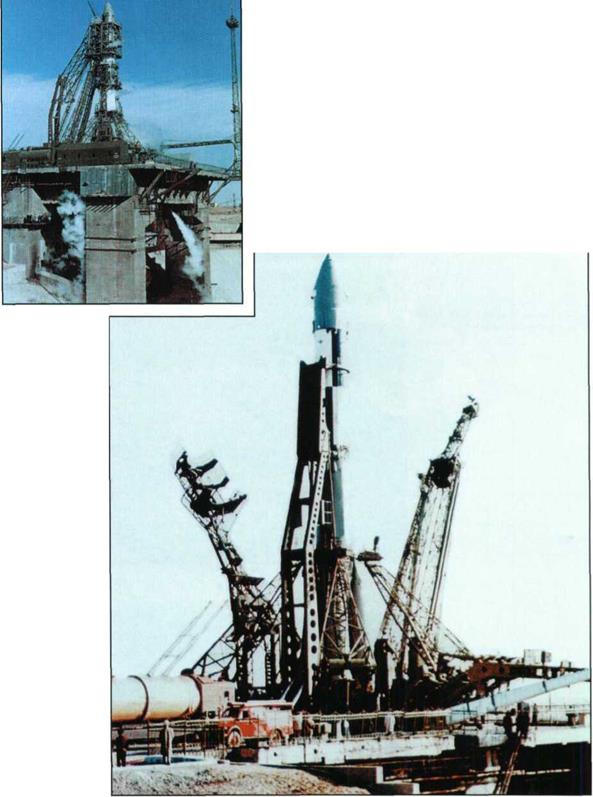
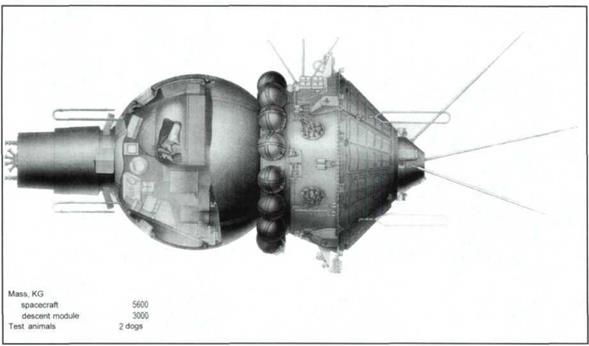
TheVoskhod research spacecraft, designed for long-term flight.
 |
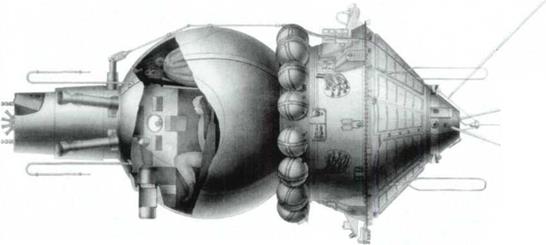
TheVoskhod spacecraft for physico-technological studies.
|
|
 |
|
 |
|
|
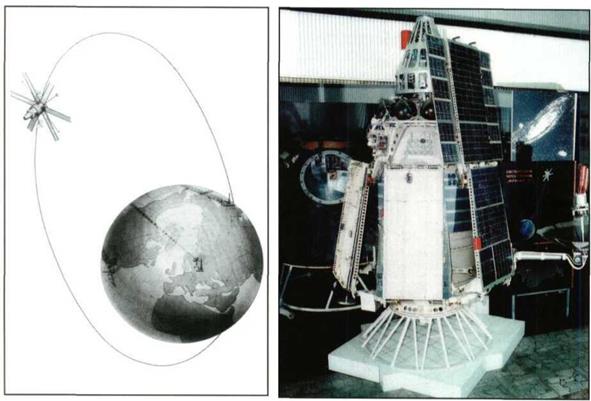
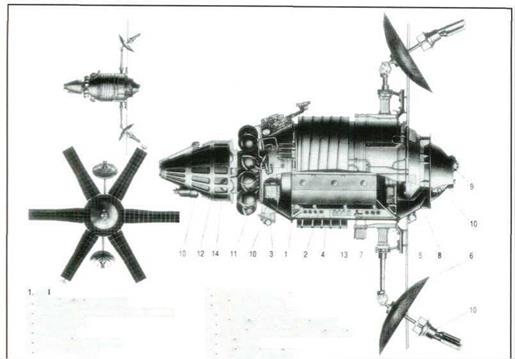
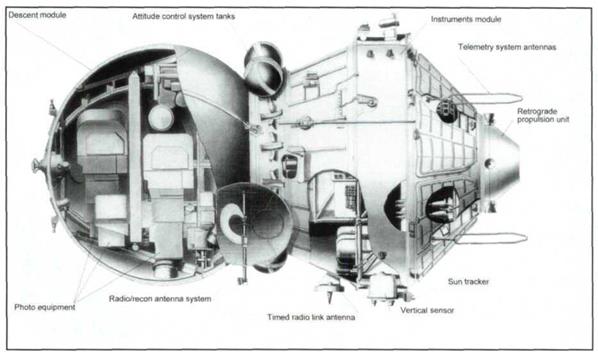
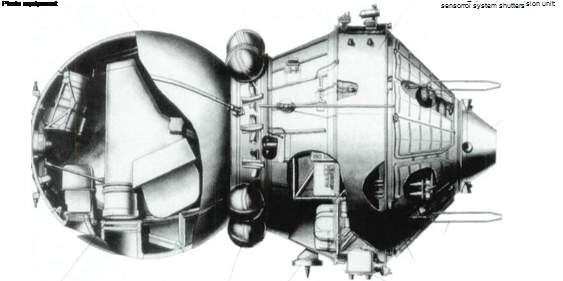 |
The Zenit-2 satellite. It was the first special-purpose unmanned satellite from which Earth photography was performed.
The Zenit-4 satellite.
|
|
|
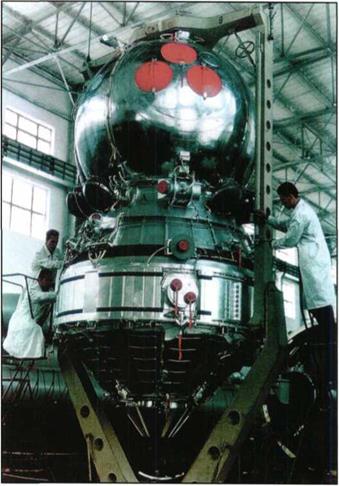
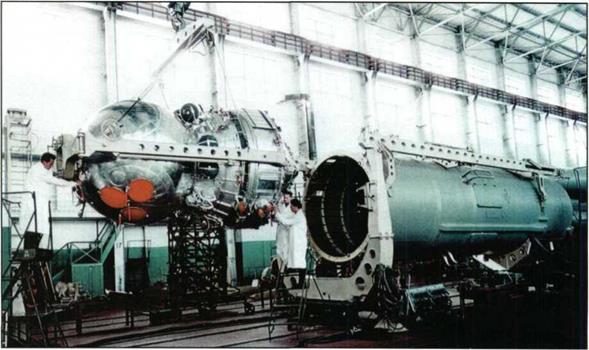
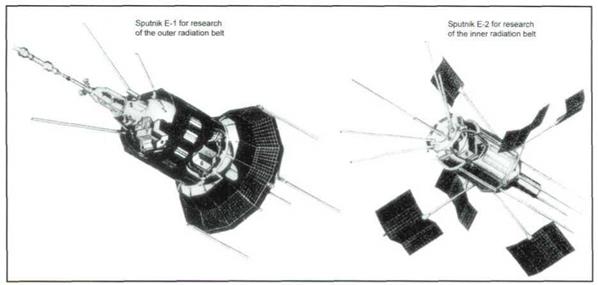
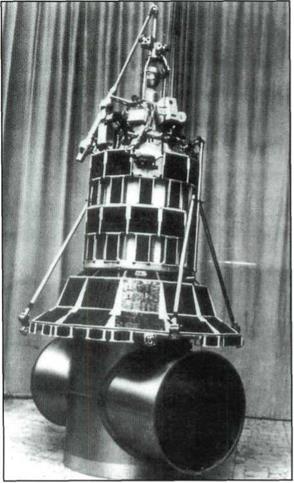 The Electron satellite system made it possible to get data on the radiation belt and the Earth’s magnetic field that was necessary to provide radiation safety on manned flights.
The Electron satellite system made it possible to get data on the radiation belt and the Earth’s magnetic field that was necessary to provide radiation safety on manned flights.
|
|











